Microsoft has provided a way of creating a copy
of the Windows Operating System on a bootable USB
flash drive only since the release of Windows 7.
This option was a much needed addition to the
Windows operating system; it also saved on the use
of DVDs, particularly as many users now heavily rely
upon USB stick, not only for backing up files, but
also for creating the all important recovery type
disks.
To create the Windows 8.1 USB flash drive you
will need the following:
- A copy of the Windows 8.1 ISO - this can be
either the ISO file downloaded directly from the
Microsoft website; or a copy of the original
Windows 8.1 DVD.
- A suitable USB stick - If you go for a
minimum 8GB stick this should be ample for what
you need.
Before you can proceed to create the USB drive
you will need to copy the contents of the Windows
8.1 DVD or ISO to a folder on your PC.
Once the contents of the Windows 8.1 DVD or ISO
have been copied to a suitable folder on your
computers' hard drive you should proceed as follows:
- Simultaneously press the Windows Key
and the letter R key on your
keyboard. This will open the Run
dialogue box.
- In the Run dialogue box type: cmd
and then click the OK
button.
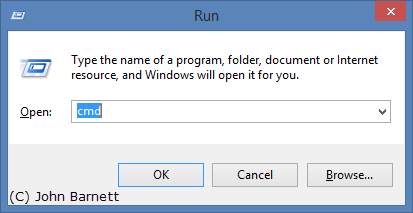
Fig: 8.18.1 Type 'cmd' into
the dialogue box and then click the OK button
- The Command Prompt window
will now open.
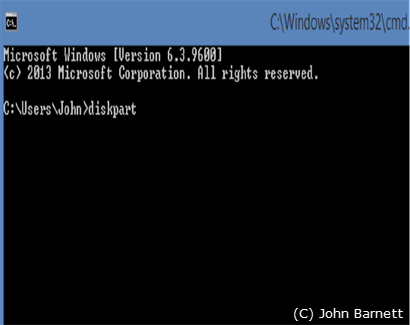
Fig: 8.18.2 Command Prompt
Window
- In the Command Prompt
window type: diskpart and then
press Enter.
- A User Account Control
security warning will now appear. Click
OK to continue.
- The Disk Partitioning
application will now open.
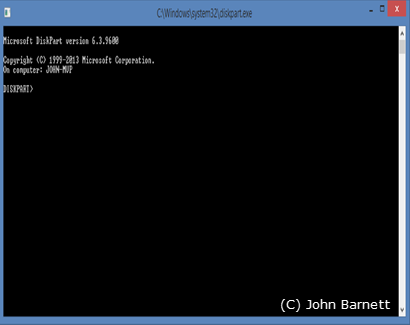
Fig: 8.18.3 Disk Partitioning
Application Window
- Insert your USB stick into your PCs USB
drive.
- Now in the diskpart application
window type: list disk
and click the Enter key.
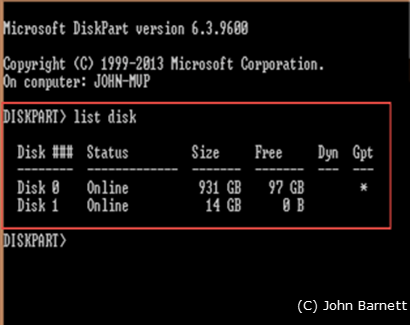
Fig: 8.18.4 List of available
drives
- The Disk Partitioning application
should now display all of the available physical
hard drives on your system.
- You now need to identify the number which
refers to your USB drive, i.e., Disk 1 and then
type: select disk X (where X is
the number of your USB drive) and then press the
Enter key
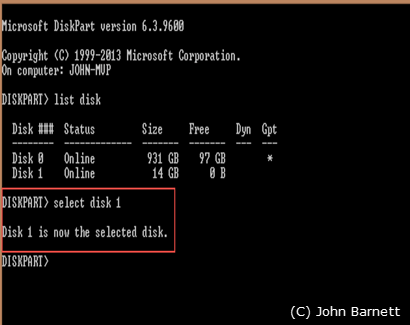
Fig: 8.18.5 Select the disk
you want to use
- Once you have selected the disk a message
should appear in the diskpart window saying "Disk
X is now selected."
- Warning! The next step
requires the system to delete
everything from your USB stick. Before
proceeding to step 13 (below)
ensure that you have backed up
any files currently on the USB stick that you
wish to keep. Once the USB stick has been
cleaned you will loose all files that were
previously stored on the USB stick.
- Now type: clean and then
press Enter.
- The clean command will now
erase all of the contents from your USB drive.
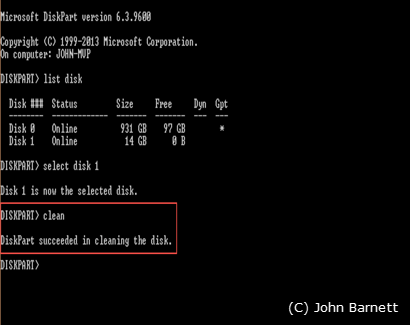
Fig: 8.18.6 Cleaning the
drive removes all files
- Once the USB stick has been cleaned the next
step is to create a Primary Partition
on the USB stick. To do this type:
create partition primary and then press
the Enter key.
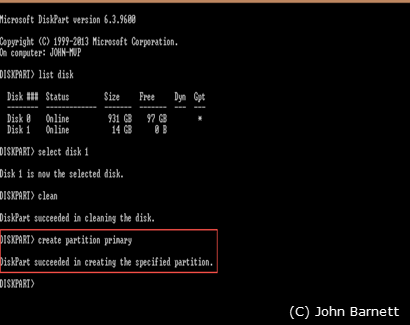
Fig: 8.18.7 Create a primary
partition on the drive
- Next type: select partition 1
and press the Enter key.
- This command will now select the partition
you have just created.
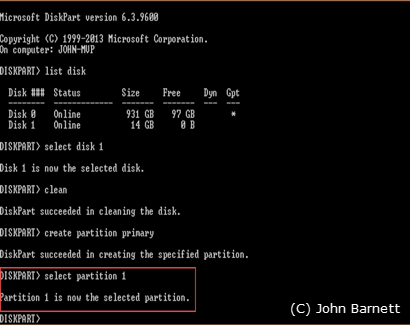
Fig: 8.18.8 Select the newly
created primary partition
- Now you need to make the selected partition
active. To do this type:
active and then press the
Enter key.
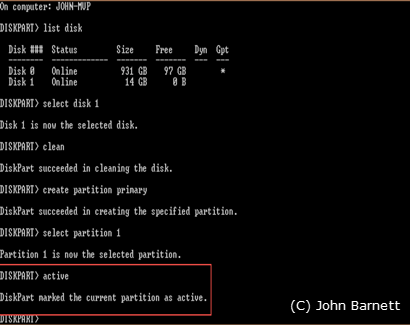
Fig: 8.18.9 Make the
partition active
- Once the partition has been made active you
need to format the partition.
- To format the partition
type: format fs=ntfs quick
- The above command will format the USB
partition in the Windows NTFS
file system format.
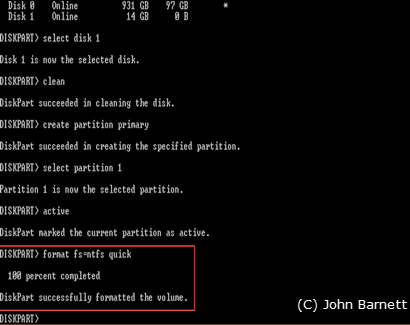
Fig: 8.18.10 Now you need to
format the partition
- Finally, you need to assign a drive letter
to the USB stick. To do this type:
assign and then press the Enter
key.
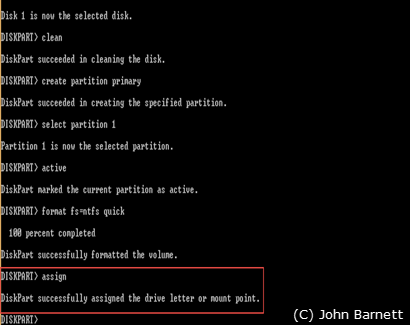
Fig: 8.18.11 Finally the
partition needs to have a drive letter assigned
- OK. Now that the USB stick has been prepared
all you now need to do is copy the contents of
the Windows 8.1 DVD or ISO from the folder you
created on your PC to the USB stick and the USB
flash drive is ready for use.
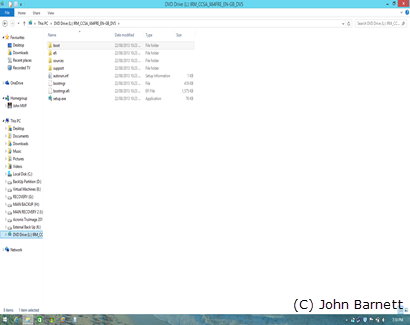
Fig: 8.18.12 Copy the Windows
files to the newly created USB drive